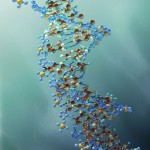 Cisplatin is a well known chemotherapy drug used to treat a range of cancers. While the drug can be an effective treatment there are notable unwanted side-effects, which can include nausea, vomiting, kidney damage and loss of hearing. This new research from Leeds University by Charlotte Willans et al. details the activity of a range of silver complexes containing N-heterocyclic carbene (NHC) ligands which show comparable and even enhanced cytotoxicity compared to cisplatin. As the compounds don’t contain platinum they are likely to be less toxic and therefore exhibit fewer and less severe side-effects.
Cisplatin is a well known chemotherapy drug used to treat a range of cancers. While the drug can be an effective treatment there are notable unwanted side-effects, which can include nausea, vomiting, kidney damage and loss of hearing. This new research from Leeds University by Charlotte Willans et al. details the activity of a range of silver complexes containing N-heterocyclic carbene (NHC) ligands which show comparable and even enhanced cytotoxicity compared to cisplatin. As the compounds don’t contain platinum they are likely to be less toxic and therefore exhibit fewer and less severe side-effects.
The team synthesised a series of monodentate, bidentate and macrocyclic cationic silver bis(NHC) complexes and tested their activity with cell lines of breast and colon cancer (MCF7 and DLD1 lines respectively). They found that the bidentate complexes showed enhanced cytotoxicity over the monodentate and macrocyclic ligands, which were similar to cisplatin. As yet the exact mechanisms of action are still unclear but are likely linked to the stabilities of the complexes.
For more information about this exciting research you can download the article which is free to access for 4 weeks. You can also keep up to date with all the latest news in inorganic chemistry by following us on twitter or signing up to the Dalton Transactions e-alert service.
Enhanced cytotoxicity of silver complexes bearing bidentate N-heterocyclic carbene ligands
Charlotte E. Willans, Diana C F Monteiro, Roger M Phillips, Benjamin D Crossley and Jake Fielden
Dalton Trans., 2012, Accepted Manuscript
DOI: 10.1039/C2DT12399A
Also of interest from the collection ‘Highlights in Chemistry’
Therapeutic applications of gold complexes: lipophilic gold(III) cations and gold(I) complexes for anti-cancer treatment
Chi-Ming Che and Raymond Wai-Yin Sun
Chem. Commun., 2011, 47, 9554-9560
DOI: 10.1039/C1CC10860C, Highlight












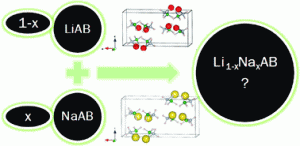

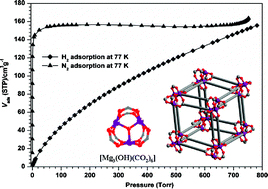

 Despite the fact that the catalytic activity of Cr and W imido complexes in ethylene dimerization processes has been studied by various authors, to date the analogous Mo catalysts have not been studied. In this HOT article, Dyer et al. set out to fill this gap in our knowledge and several molybdenum bis(imido) complexes were tested for ethylene dimerization catalysis in combination with EtAlCl2, showing moderate activity when bulky aryl substituents at the imido ligand are employed. In contrast, when MeAlCl2 is used the activity of the catalyst decreases considerably. To understand the role of the activator in these processes the authors have determined the molecular structures of several complexes derived of the reaction of bis(imido) molybdenum compounds with different aluminium halide reagents.
Despite the fact that the catalytic activity of Cr and W imido complexes in ethylene dimerization processes has been studied by various authors, to date the analogous Mo catalysts have not been studied. In this HOT article, Dyer et al. set out to fill this gap in our knowledge and several molybdenum bis(imido) complexes were tested for ethylene dimerization catalysis in combination with EtAlCl2, showing moderate activity when bulky aryl substituents at the imido ligand are employed. In contrast, when MeAlCl2 is used the activity of the catalyst decreases considerably. To understand the role of the activator in these processes the authors have determined the molecular structures of several complexes derived of the reaction of bis(imido) molybdenum compounds with different aluminium halide reagents. In this HOT article, several new Ti(IV) complexes bearing aryloxy or alkoxy ligands have been prepared and evaluated as catalysts for the oligomerization/polymerization of ethylene. Obviously, polyethylene is the major product but ethylene oligomers also result, ranging from dimers to higher oligomers. The results indicate a number of different active species are formed upon activation, with oligomers likely arising through a metallacyclic mechanism.
In this HOT article, several new Ti(IV) complexes bearing aryloxy or alkoxy ligands have been prepared and evaluated as catalysts for the oligomerization/polymerization of ethylene. Obviously, polyethylene is the major product but ethylene oligomers also result, ranging from dimers to higher oligomers. The results indicate a number of different active species are formed upon activation, with oligomers likely arising through a metallacyclic mechanism.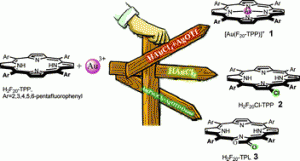
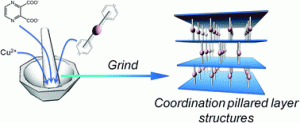

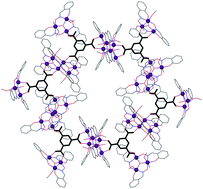

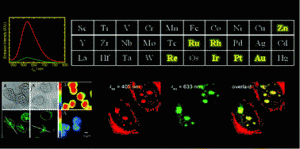 K
K